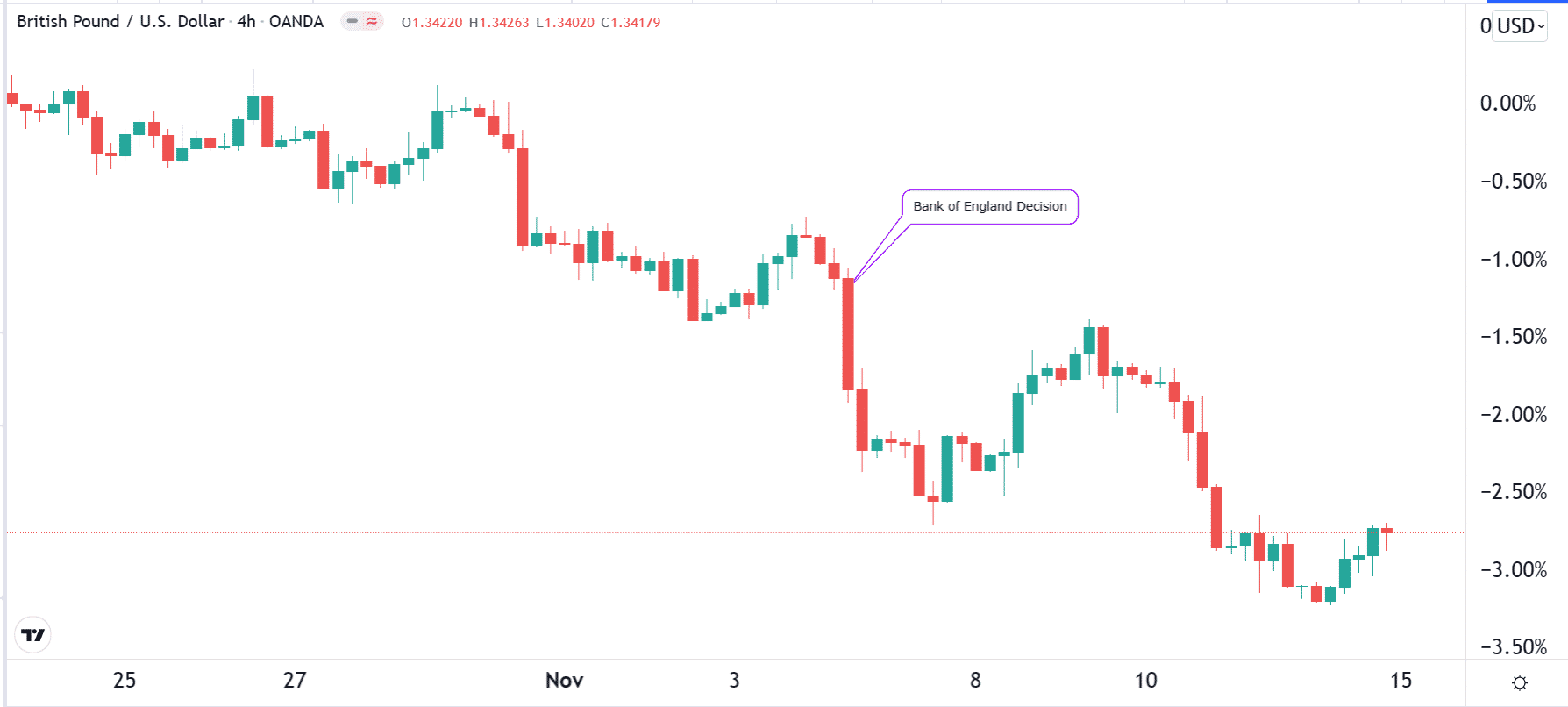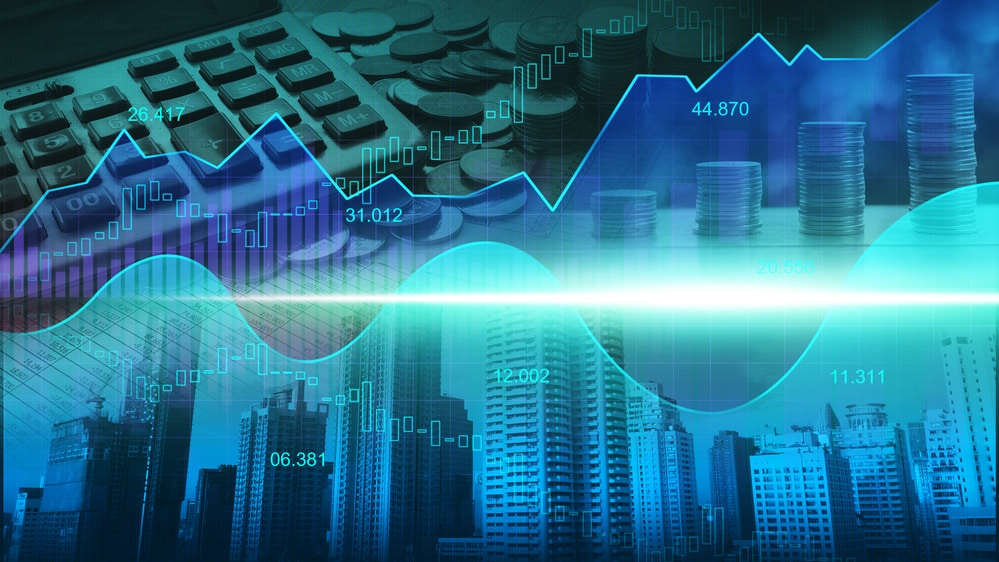Central banks are some of the most important players in the Forex market. Besides, in most countries, only a central bank can set interest rates and even print money. Therefore, investors pay close attention to actions that these banks make.
They also watch key economic numbers and attempt to predict what a central bank will do. For example, if a country publishes strong inflation and employment numbers, it could send a picture that the bank will turn hawkish. Similarly, when an economy is in trouble, they can predict that the bank will embrace a tight monetary policy.

Therefore, as a forex trader, it is always important to understand how you can trade when a central bank makes a decision. This is simply because currency pairs tend to show some significant moves when the decision comes. For example, in the chart above, we see that the GBPUSD pair dipped sharply after the Bank of England (BOE) interest rate decision.
Key central banks in forex
Before we look at how the central bank works, it is important that we mention some of the top central banks that you need to know in forex.
- Federal Reserve – This is the American central bank. It meets eight times per year. The current Fed chair is Jerome Powell.
- European Central Bank (ECB) – This is the central bank of the European Union. Its chair is Christine Lagarde.
- Bank of England (BOE) – This is the UK central bank, which is currently headed by Andrew Bailey.
- Bank of Canada (BOC) – This is the central bank of Canada.
Other popular central banks you need to know about are the Reserve Bank of Australia (RBA), Reserve Bank of New Zealand (RBNZ), Swiss National Bank (SNB), and Norges Bank. Many traders also follow some emerging market central banks like the Central Bank of the Republic of Turkey (CBRT), South Africa Reserve Bank (SARB), and Banxico of Mexico.
The role of a central bank
Central banks have three main roles in an economy. First, they are mandated to ensure the stability of the financial market. This is why, in the United States, the Federal Reserve carries regular stress tests on some of the biggest banks like Morgan Stanley and Goldman Sachs. The bank also oversees all banks in the country.
Second, the central bank has the mandate of ensuring that consumer prices are stable. In most developed countries, central banks have an inflation target of 2%. Therefore, if inflation jumps significantly above this target, the bank can intervene by hiking interest rates. Similarly, when inflation falls below this level or when it moves to deflation, the bank can intervene by cutting interest rates.
Third, the bank has the mandate of ensuring that the unemployment rate is low. In the United States, the Fed considers the mandate to be fulfilled when the unemployment rate drops below 5%.
Central bank meetings
Central banks meet periodically to assess the performance of the economy and then make the necessary adjustments. In the United States, a special committee known as the Federal Open Market Commission (FOMC) meets eight times per year to make these decisions. Other central banks like the BOE, RBA, and ECB also meet about eight times per year. Others usually meet once per quarter.
When they meet, these central banks usually assess the situation in the economy and then take action. In theory, when the economy is in bad shape, the bank will sound dovish. This is where it either cuts interest rates or hints that it will slash them.
For example, when the US was in a lockdown, the Fed moved swiftly to slash interest rates to zero. It also announced a program known as quantitative easing (QE). This is where the bank starts to print money and pump it into the economy by buying bonds and mortgage-backed securities.
The idea behind rate cuts is relatively easy. When interest rates fall, the cost of borrowing in an economy falls as well. As a result, many people are incentivized to borrow, such as taking mortgages and auto loans. This, in turn, leads to a more robust economy.
Also, low-interest rates make fixed assets like bonds less attractive. As such, there is usually an incentive among people to invest in assets like stocks that tend to be relatively risky.
How to trade central bank meetings
As a forex trader, there are several things you need to do when trading central bank meetings. First, you need to know when a central bank will deliver its decision. To do this, we recommend that you use an economic calendar.
This calendar is a tool that has a schedule on when specific events will take place. Therefore, you should check the calendar every Monday morning or during the weekend. Doing this will help you be more prepared. As you get more experienced, you will find that the use of a calendar will be easy. For example, you will know that the RBA meets every first Tuesday of the month.
Second, you need to prepare yourself for where the central bank is. The easiest method is to find what popular news platform covered the previous decision. Also, you should be aware of the overall statements by central bank officials. Doing this will help you know what to expect. For example, in 2021, the US dollar had a muted response to the Fed’s decisions since the bank had already warned that it wouldn’t hike interest rates any time soon.
Finally, we recommend that you use bracket orders when you are positioning yourself for the central bank decision. A bracket order is one that combines a buy and a sell-stop. For example, if the GBPUSD was trading at 1.1300 before the BOE decision, you could place a buy-stop at 1.1335 and set a take-profit at 1.1400 and stop-loss at 1.1300.
At the same time, you could place a sell-stop at 1.2800 and a take-profit at 1.2750, and stop-loss at 1.2850. In this case, one of those orders will be implemented when the decision happens. The stop-loss and take-profit orders will help to cushion your losses.
Summary
In this article, we have looked at what a central bank is and how it works. We have also looked at some of the top central banks to know and highlighted some of the best methods to trade these decisions. Most importantly, we have looked at how you can use bracket orders in forex.
